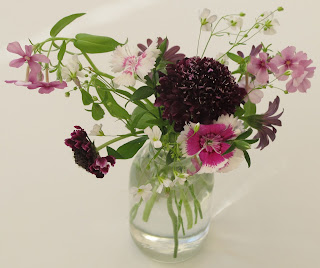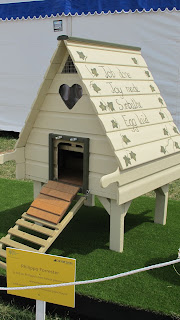First there were lonely bouquets, now there are depressed cakes.
While the Lonely Bouquet Day was a welcome excuse to be kind to strangers and
promote local flowers, the Depressed Cake Shop is an awareness exercise, which will bring amateur and
professional bakers together, and raise some money for mental health charities
in the process.
In Nineteen Eighty-Four, Orwell said, “Sanity is not statistical.”
In the context of Winston Smith’s plight, it wasn’t. But for organisations
raising awareness of or funding for mental health issues, statistics are a way
to show just how prevalent and how damaging mental illness is, and how
important it is to discuss it. Although awareness is increasing, many people
with mental health issues still feel there is a stigma attached to the illness,
which makes it harder to reach out and get help.
The Mental Health Foundation gives these figures:
- · Between 8-12% of the population experience depression in any year.
- · Rates of mental health problems among children increase as they reach adolescence. Disorders affect 10.4% of boys aged 5-10, rising to 12.8% of boys aged 11-15, and 5.9% of girls aged 5-10, rising to 9.65% of girls aged 11-15.
- · 1 in 4 British adults experience at least one diagnosable mental health problem in any one year
- · Depression affects 1 in 5 older people living in the community and 2 in 5 living in care homes.
- · Suicide remains the most common cause of death in men under the age of 35.
So it is a very real and serious problem that not only affects the
people with the illness, but their families and friends too.
The Depressed Cake Shop will appear in venues throughout the UK
and there will also be pop ups appearing in the USA and Australia. These pop up
shops will be unlike the pretty and colourful cake shops that have become
popular in recent years, as all the cakes, biscuits and sweet eats will have
the outside appearance of being grey. They will still be as delicious as the
bright or pastel coloured sweet things that we are used to eating, but they may
not appeal to our taste buds in the way that a bright blue or a pale yellow or
pink cake would.
The outside grey colour will represent depression and it could
stand for any of these symptoms: loss of interest or motivation or hope, difficulty
in seeing beauty or good intentions or positives, the physical aspects of
depression from lack of energy and insomnia to headaches and musculoskeletal pain.
Not everyone with depression has the same symptoms; not everyone sees the world
the same way. One person’s grey could be another person’s blue. One person’s
black and white could be another person’s pink and green. The inside of the
food will reflect these variations – with some bakers making brightly coloured
cakes and biscuits, but others keeping the grey all the way through. The colour
grey on the outside is just a representation of all of these, showing that
depression is the one thing, the feeling, the illness, that they have in
common.
The flagship Depressed Cake Shop will be in Brick Lane in London
and will run from Friday to Sunday. I will be helping the Kent shop, run by the
tireless Elisabeth Shrimpton of Lillyput Bakery. The Kent shop is this Friday 2nd
August at Cinnamon Culture on Plaistow Lane, Bromley, from 10am to 5pm,
although any donations of grey-topped cakes or sweet things can be dropped off
from 9am-10am. Each pop up chooses its own mental health charity to donate the
funds it raises to, and the Kent shop is donating to Bromley Mind. Hopefully this event will get people talking about mental health!
Thank you to the following bakers for sharing photos of their wonderful designs: Saff Miriam Kelly of The Dainty Bakehouse for the lemon macarons, Jacqui Kelly of Cake Revolution London for the iced gingerbread cookies, and Sarah Newman for the cherry vanilla layer cake. Also thanks to Paper Magpie for the brilliant poster for the Kent Depressed Cake Shop.
































































